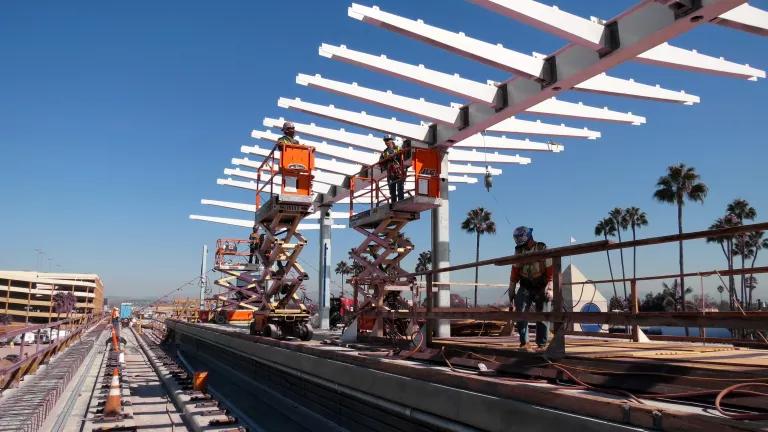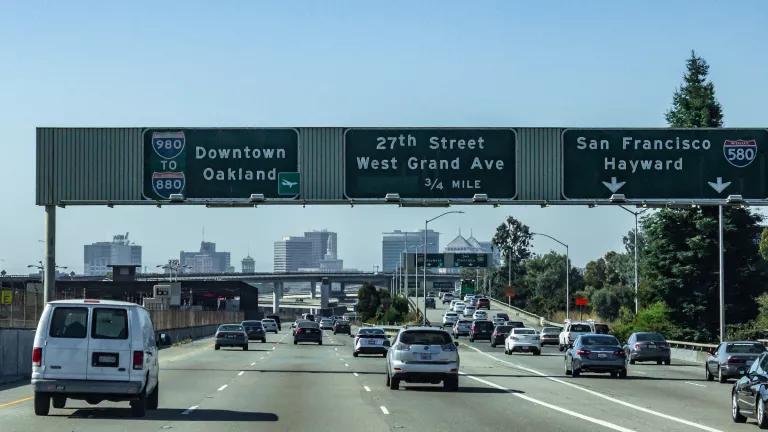Attempts to Undermine California's ZEV Program Would Only Set the U.S. Electric Vehicle Industry Back
The Wall Street Journal recently reported that automakers and their trade associations are now fighting California’s next revision to its Zero Emission Vehicle (ZEV) program, a long-standing air quality program and technology-forcing standard to bring plug-in electric and fuel cell vehicles to California. Automakers are now aiming to throw the ZEV program under the bus as they negotiate with the U.S. Environmental Protection Agency, Department of Transportation, and California Air Resources Board on a set of different standards, namely greenhouse gas tailpipe standards and fuel economy standards.
It would be a critical mistake for the Administration and agencies to take the automakers’ bait and to undermine the states’ authority in protecting their own air quality. California and other states following the lead of California under Section 177 of the Clean Air Act have long held the authority to adopt critical air quality programs and technology-forcing standards like the ZEV program. As the American Lung Association of California recently reported, vehicles running on electricity from the California grid would reduce carbon monoxide by 99% and smog and particle pollution by nearly 70% compared to today’s conventional gasoline vehicle.[1] This translates to $1450-$1530 less health-related damages per electric vehicle versus today’s vehicles. States adopting the ZEV program are protecting their citizens from health risks such as asthma attacks, lost school and work days, acute and upper respiratory symptoms, and visits to the ER while also enabling long-term air quality goals to be met.
It would be also foolhardy to put the brakes on the only program in the nation that ensures long-term, continued investment by automakers in advanced technologies like the Chevy Volt, Nissan Leaf ,and Honda Clarity. The President has worked hard to launch a domestic plug-in electric vehicle industry through his goal of one million plug-in electric vehicles on the road by 2015, as I have blogged on previously. The carrots have already included billions of dollars in loan guarantees and incentives to entice automakers, suppliers, start-ups, and battery manufacturers to establish domestic manufacturing plants and to provide consumer incentives. Federal and state agencies including in California are working to provide infrastructure incentives, through the American Recovery and Reinvestment Act of 2009, that will help ensure public charging infrastructure is available. But we are still in a delicate moment in time. Pulling the rug out from the ZEV program – the only stick with the carrots – threatens to undermine these investments as well as the real domestic jobs that have been created in the wake of the auto industry bailouts.
If California and the ZEV states were asking automakers to build rocket ships to the moon, automakers might have a case. But an honest evaluation of California’s proposal shows that it provides a reasonable floor to the industry and gives adequate lead time (with technical reviews likely).
- Nine different consulting forecasts, including those by Deutsche Bank and McKinsey & Co shows the PEV market for 2020 ranging from 2 to 14% as shown in the Figure. California is proposing 5.5% of sales by MY2018 or 81,000 vehicles [2]-- reasonable considering that the state has adopted hybrids at twice the national rate and that the above forecasts do not include fuel cell vehicles.[3]
- Citigroup’s Global Markets report, identified 61 plug-in electric and fuel cell vehicle models being offered by MY 2015 with U.S. sales being approximately 420,000 for 2015. [4] California’s proportional share is nearly 50,000 units for 2015 and, if historical hybrid sales are applied, closer to twice that or 100,000 units for 2015.
California has lived by the letter and spirit of its commitments to collaboratively work toward a National Program for GHG emissions and fuel economy. It’s time for automakers and their associations to do the same and stop trying to undermining California and state authority on ZEV in the meantime.

Image Source: Recreated from California Plug-in Electric Vehicle Collaborative, Taking Charge, December 2010.
[1] Compared to a vehicle meeting today’s California LEV II emission standards. Estimates are on a well-to-wheels, or full fuel-cycle basis so include upstream emissions from producing gasoline as well as electricity.
[2] We note some very slight discrepencies between Wall Street Journal's reported numbers versus our assessment of the ARB ZEV proposal. We use the WSJ numbers here for consistency and to avoid confusion with the original story.
[3] Surveys from the California Fuel Cell Partnership, which several automakers belongs to, state that automakers have plans to produce 16,700 fuel cell vehicles for the CA market for 2018.
[4] The report was conducted in collaboration with Ceres, the Investor Network on Climate Risk, Baum and Associates, the Rutgers University School of Planning and Public Policy and the University of Michigan Transportation Research Institute.




